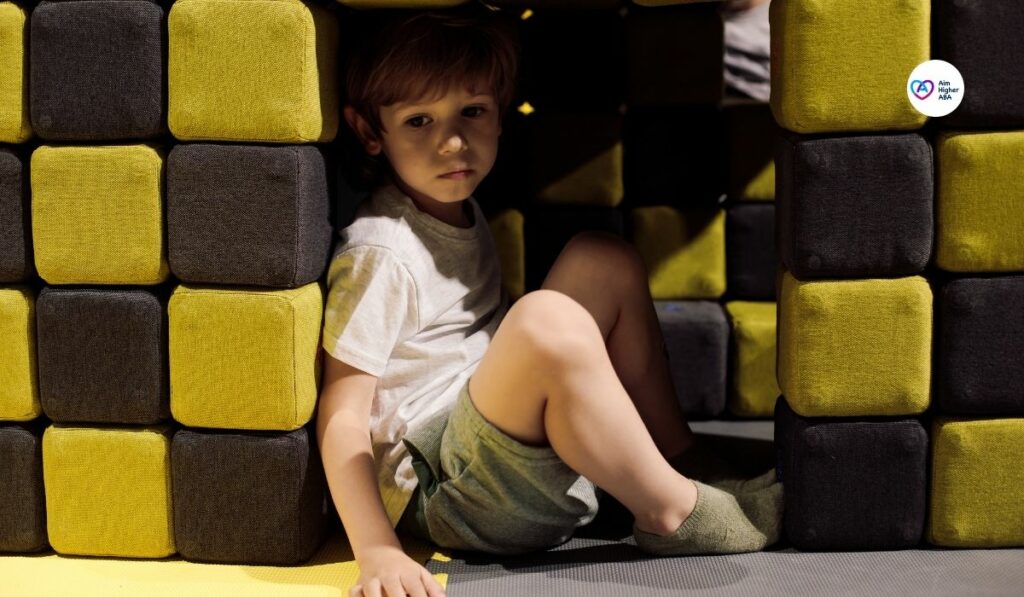Toilet training can be a challenging milestone for any child, but it can be incredibly daunting for nonverbal children with autism spectrum disorder (ASD). Communication difficulties, receptive sensitivities, and other factors can make the process more complex. However, with patience, consistency, and understanding, toilet training can be achievable for children with autism who are nonverbal. Here are ten tips to help make toilet training a success:
Establish a Routine:
Establishing a routine is a cornerstone of successful toilet training for nonverbal children with autism. The predictability and structure provided by a consistent schedule can significantly aid in reducing anxiety and increasing the likelihood of successful bathroom trips. Here’s a deeper dive into why routine is so essential and how to implement it effectively:
Predictability and Familiarity: For children with autism, uncertainty and change can be particularly distressing. A consistent bathroom schedule provides predictability and familiarity, helping to reduce anxiety and increase comfort levels. Knowing when to expect bathroom breaks throughout the day can help alleviate stress and make the process feel more manageable for the child.

Establishing Associations: By consistently scheduling bathroom breaks at specific times, you help the child associate those times with the need to use the toilet. For example, if you always have a bathroom break immediately after breakfast, the child will learn to anticipate and recognize the need to use the toilet after eating. This association can facilitate the development of appropriate bathroom habits.
Use Visual Supports:
Visual supports are invaluable tools for nonverbal children with autism, providing them with clear and concrete guidance in various activities, including toilet training. Creating a visual schedule or picture chart outlining the steps of using the toilet can significantly aid in the toilet training process. Here’s how to effectively utilize visual supports for toilet training:
Create a Visual Schedule: Begin by designing a visual schedule that outlines the sequence of steps involved in using the toilet. This schedule should be tailored to the individual needs and abilities of the child. You can use a large poster board, a laminated sheet, or a digital device to display the visual schedule.
Include Sequential Pictures: Each step of the toilet training process should be represented by a clear and easily recognizable picture. For example, include images of pulling down pants, sitting on the toilet, wiping, and flushing. Use simple, colorful illustrations or photographs that clearly depict each step.
Use Symbolic Icons: In addition to pictures, you can incorporate symbolic icons or symbols to represent each step. Symbols such as arrows, checkmarks, or symbols commonly used in communication systems like PECS (Picture Exchange Communication System) can enhance understanding and communication.
Sequence the Steps: Arrange the pictures or symbols in a sequential order that reflects the chronological order of the toilet training process. Start with the initial step of entering the bathroom and conclude with the final step of washing hands. This sequential arrangement helps the child understand the logical flow of the task.
Introduce a Potty Chair:
Introducing a potty chair can be a game-changer for toilet training nonverbal children with autism. Compared to regular toilets, which can seem daunting due to their size and height, potty chairs offer a more approachable alternative. These smaller, ground-level chairs are specifically designed to be less intimidating for children, providing them with a comfortable and familiar option for bathroom use.
By introducing a potty chair, parents and caregivers can help alleviate the anxiety and receptive overwhelm that some children with autism may experience when faced with the prospect of using a standard toilet. Placing the potty chair in a familiar and comfortable location further enhances the child’s sense of security and encourages them to engage with the toilet training process.
Overall, incorporating a potty chair into the toilet training routine can significantly improve the child’s comfort and confidence, paving the way for successful toilet training outcomes.
Use Reinforcement:
Positive reinforcement is a powerful tool in toilet training. Identify motivating rewards for your child, such as stickers, small toys, or praise. Whenever your child successfully uses the toilet, provide immediate and enthusiastic praise along with the chosen reward. Reinforcement helps to reinforce the desired behavior.
Monitor Signs of Readiness:
Look for signs that your child is ready for toilet training, such as showing interest in the bathroom, staying dry for more extended periods, or expressing discomfort with dirty diapers. It’s essential to wait until your child is developmentally ready to begin toilet training.
Model and Demonstrate:
Children with autism often learn best through imitation. Model the steps of using the toilet yourself and encourage your child to imitate your actions. You can also use videos or social stories to demonstrate toilet training concepts clearly and visually.
Create a receptive-Friendly Environment:
Receptive sensitivities can impact a child’s willingness to use the toilet. Pay attention to your child’s receptive preferences and create a comfortable environment. This may involve adjusting lighting and temperature or providing receptive tools like weighted blankets or fidget toys.
Offer Choice and Control:
Empower your child by offering choices and control during the toilet training process. Let them choose their preferred potty chair, toilet seat, or even the color of their underwear. Providing choices helps to increase motivation and engagement.
Practice Patience and Persistence:

Toilet training is a gradual process that requires patience and persistence. Be prepared for setbacks and accidents along the way. Stay calm and supportive, and avoid placing pressure on your child. Celebrate small successes and progress, no matter how minor.
Seek Professional Support if Needed:
If you’re struggling with toilet training or facing significant challenges, don’t hesitate to seek support from professionals such as pediatricians, behavior therapists, or occupational therapists. They can provide guidance, strategies, and individualized support to help your child succeed.
Conclusion
In conclusion, introducing a potty chair can be a beneficial strategy for toilet training nonverbal children with autism. It can help alleviate anxiety and promote comfort and familiarity with the bathroom routine. By providing a smaller, ground-level option, parents and caregivers can create a less intimidating environment for their child, facilitating the toilet training process. For more personalized guidance and support in toilet training and other aspects of autism intervention, consider reaching out to a professional at AIM Higher ABA.
FAQs
What is the significance of establishing a routine in toilet training for nonverbal children with autism?
Establishing a routine provides predictability and familiarity, which can reduce anxiety and increase comfort levels for children with autism. A consistent schedule helps them associate specific times with the need to use the toilet, facilitating the development of appropriate bathroom habits.
How can visual support aid in toilet training for nonverbal children with autism?
Visual supports, such as visual schedules or picture charts, offer clear and concrete guidance in the toilet training process. They help children understand the sequence of steps involved in using the toilet, enhance communication, and provide a visual representation of what is expected.
Why is introducing a potty chair recommended for toilet training nonverbal children with autism?
A potty chair provides a less intimidating and more approachable option for bathroom use compared to standard toilets. Its smaller size and ground-level design help alleviate anxiety and receptive overwhelm, making it easier for children to engage with the toilet training process.
How does positive reinforcement contribute to toilet training success?
Positive reinforcement, such as praise, stickers, or small toys, motivates children to repeat desired behaviors. By rewarding successful toilet use immediately and enthusiastically, parents and caregivers reinforce the behavior and encourage continued progress in toilet training.
What are some signs that indicate a nonverbal child with autism may be ready for toilet training?
Signs of readiness include:
- They are showing interest in the bathroom.
- We are staying dry for more extended periods.
- They are expressing discomfort with dirty diapers.
- I am demonstrating a basic understanding of toilet-related concepts.
It’s essential to wait until the child is developmentally ready before initiating toilet training.
How can modeling and demonstration be used to facilitate toilet training for nonverbal children with autism?
Children with autism often learn best through imitation. Parents and caregivers can model the steps of using the toilet themselves and encourage the child to imitate their actions. Videos or social stories can also be used to demonstrate toilet training concepts visually.
What strategies can be employed to create a receptive-friendly environment for toilet training?
Adjusting lighting and temperature and providing receptive tools like weighted blankets or fidget toys can help create a comfortable environment for children with receptive sensitivities. Paying attention to their receptive preferences can increase their willingness to engage in the toilet training process.
Why is offering choice and control necessary in toilet training for nonverbal children with autism?
Empowering children by offering choices, such as selecting their preferred potty chair or toilet seat, increases their motivation and engagement in the toilet training process. Providing them with control over aspects of the process fosters independence and reduces resistance.
How should parents approach setbacks and accidents during toilet training?
Toilet training is a gradual process that requires patience and persistence. Parents should stay calm and supportive, avoiding placing pressure on the child. Celebrating small successes and progress and reframing setbacks as learning opportunities can help maintain a positive outlook.
When should parents seek professional support for toilet training difficulties?
If parents encounter significant challenges or are struggling with toilet training, it is recommended that they seek support from professionals such as pediatricians, behavior therapists, or occupational therapists. These professionals can offer guidance, strategies, and individualized support tailored to the child’s needs.



 Previous Post
Previous Post
Leave Your Comment